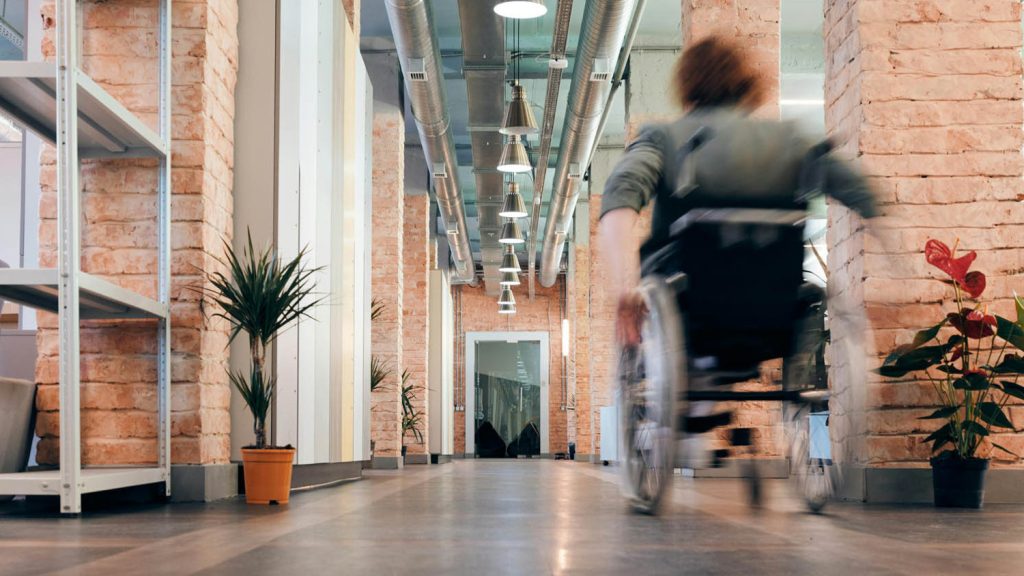Accessible product design makes a big difference to users with disabilities, writes Stephen Holmes, but this industry still has many barriers to break down before it can truly be considered inclusive
On separate occasions over the past few weeks, I’ve been lucky enough to catch up with Jude Pullen and Ross Atkin, both talented design engineers. It’s been a good reminder of The Big Life Fix, the excellent reality TV series in which they both participated.
Originally aired in 2020 on BBC2, The Big Life Fix focused on tailored design solutions for people with disabilities. If you’ve not seen it, then you should try to hunt it down on some streaming platform or other. The show not only blended marvellous ingenuity with a feelgood payoff, but also provided a terrific showcase of why so many enter this profession: to make a difference.
Increasing numbers of young people, many of whom will have graduated in recent weeks, are now looking for roles in which they can effect change.
And there are many people out there, including Pullen and Atkin, who help advise corporations on, among other topics, designing more accessible products. Many work in studios with commendable track records of positive impact. Many graduates will want to join them, eschewing more traditional career pathways in order to join a company making a tangible difference.
Shape-shifting skill
In the previous issue of DEVELOP3D, I met Tatum Robotics, company developing a tactile robotic hand that DeafBlind people use to communicate. I was impressed to see how closely its designers worked with members of the DeafBlind community.
In fact, I think that a key skill for designers is the ability to ‘shape-shift’ – to understand the experience of the people for whom they are designing, to take on their viewpoint, to dive deeply into the details.
All of this makes me proud of the type of people designers and engineers tend to be, and you should be too.
But however brilliant they might be at creating products for others and their lives, no research will ever be quite as good as first-hand, lived experience.
For that reason, it seems to me that there is a very strong argument that more people with disabilities should be employed as designers and engineers.
And that, in turn, raises the question: How accessible, really, is this industry, its workplaces and its tools? In total, there are some 1.8 billion people with disabilities in the world, more than the total population of China.
In the UK, over two million people live with some level of sight loss and over half a million use wheelchairs. An estimated 15% to 20% of the UK population is thought to be neurodivergent.
I could sit here, reeling off numbers all day long. But I strongly feel that, as an industry, product design and engineering is still struggling to achieve the kind of inclusivity seen in other industry sectors and that needs fixing.
A whole new approach
Most business leaders now recognise that, when it comes to accessibility, their websites need redesigning, their offices need retrofitting, their facilities need to be improved. There’s a lot to consider and a lot of work to do. It’s not just a case of putting in a wheelchair-accessible toilet and then patting themselves on the back.
It was recently explained to me that if you cannot navigate a business’s website using just the keyboard, then some people won’t be able to navigate it at all.
So what about the main tool of our trade, complex 3D CAD software? AI might yet provide a solution here, with voice prompts acted upon by AI-enabled assistants to carry out modelling tasks. But it’s safe to say that a working solution is some way off.
Everywhere we go in our industry, there are barriers to inclusivity. Some will remain firmly in place until technology advances. Others could quite easily be removed tomorrow, if only the problems they present were more widely recognised.
At a recent trade show, for example, I realised that the fixed user interface screens on some 3D printers are situated way too high up to be read by someone under 5 foot tall or sitting in a wheelchair.
As we increasingly strive for equality, accessibility may be the next big social revolution — and maybe as designers and engineers, a long, hard look at our own workplaces and tools might be a very good place to start.
This article first appeared in DEVELOP3D Magazine
DEVELOP3D is a publication dedicated to product design + development, from concept to manufacture and the technologies behind it all.
To receive the physical publication or digital issue free, as well as exclusive news and offers, subscribe to DEVELOP3D Magazine here






